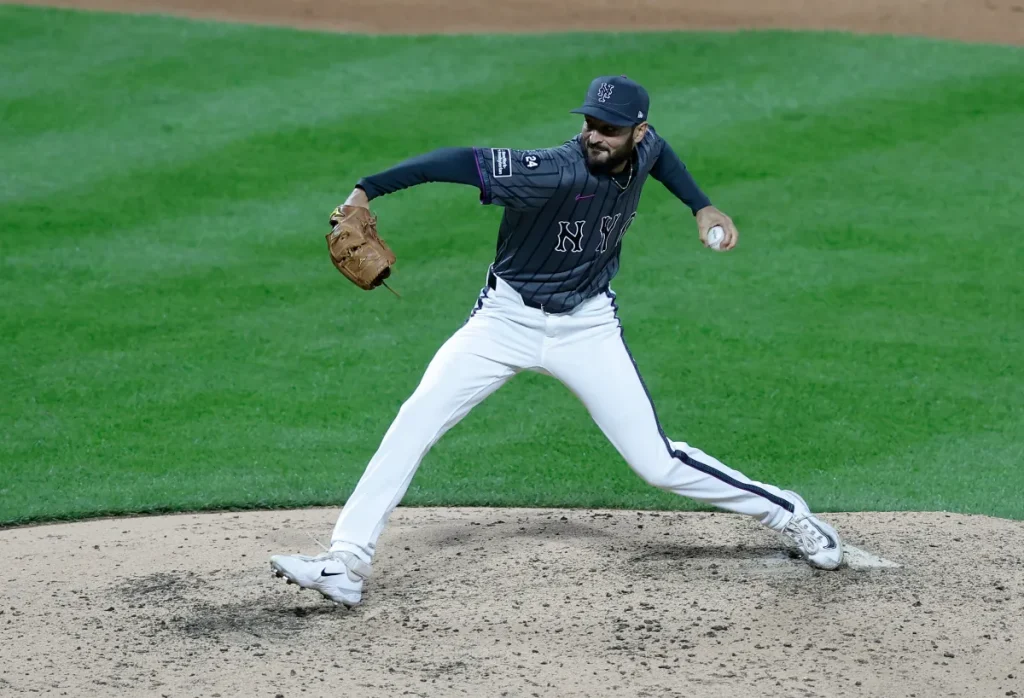Mets Set to Part Ways with Young Reliever Amid MLB Contract Deadline
As Major League Baseball approaches a crucial roster deadline this Friday, the New York Mets appear poised to make a difficult personnel decision regarding left-handed reliever Danny Young. Teams across the league face important choices by Friday afternoon, when they must determine whether to tender contracts to players still on their rookie deals. This annual process typically affects players with high projected arbitration salaries, though occasionally even league-minimum earners find themselves without contracts. Young, despite having only 1.2 years of service time and not yet being arbitration-eligible, is reportedly on the Mets’ non-tender list according to credible sources.
The situation is particularly poignant given Young’s current circumstances. At 31 years old, the left-hander is recovering from Tommy John surgery performed in May, a procedure that typically requires a lengthy rehabilitation period. According to Will Sammon of The Athletic, who broke the news on Thursday, Young has only recently resumed throwing and isn’t expected to return to action until sometime in the first half of the 2026 season. This extended recovery timeline appears to be a significant factor in the Mets’ decision-making process, as the organization weighs the value of maintaining a roster spot for a player who won’t contribute for nearly a year and a half.
Young’s journey through Major League Baseball has been a winding one, with the Mets representing his third organization in a relatively brief career. Before joining New York, he made brief appearances with the Seattle Mariners and Atlanta Braves, but it was with the Mets where he found his most sustained opportunity. During the 2024 season, Young made 42 of his 63 career appearances, becoming a reliable enough bullpen option to earn a spot on the team’s playoff roster. His career statistics include a respectable 4.01 ERA, while his final season with the Mets saw him pitch 8⅓ innings across 10 appearances with a 4.32 ERA.
The timing of this decision raises interesting questions about the Mets’ roster management strategy. The organization entered Friday with a full 40-man roster, meaning they aren’t necessarily pressed to create space immediately. What makes the timing curious is that the team waited until after the deadline had passed to protect eligible prospects from the Rule 5 Draft by elevating them to the 40-man roster. This sequencing suggests the Mets may have additional roster moves planned, perhaps eyeing free agent acquisitions or trades as they continue reshaping their bullpen for the 2025 campaign.
For Young, this development represents the harsh reality that many professional athletes face when dealing with significant injuries. Tommy John surgery, while increasingly common and with a high success rate, still requires a substantial recovery period that organizations must factor into their long-term planning. Despite showing promise when healthy and contributing to a playoff team, Young’s extended absence apparently tipped the scales against him in the Mets’ evaluation. At 31, with a projected return not coming until well into 2026, the left-hander now faces the challenge of rehabilitating while simultaneously seeking another opportunity.
This situation highlights the business side of baseball, where difficult personnel decisions must be made regardless of a player’s potential or past contributions. For the Mets, moving on from Young represents a calculated roster management decision as they continue building toward contention in the competitive National League East. For Young, it marks another chapter in a career that has already seen its share of transitions between organizations. As the non-tender deadline passes and teams finalize their rosters, players like Young remind us of baseball’s perpetual balance between performance, potential, health, and the unforgiving timeline of recovery that all organizations must navigate in their pursuit of success.


